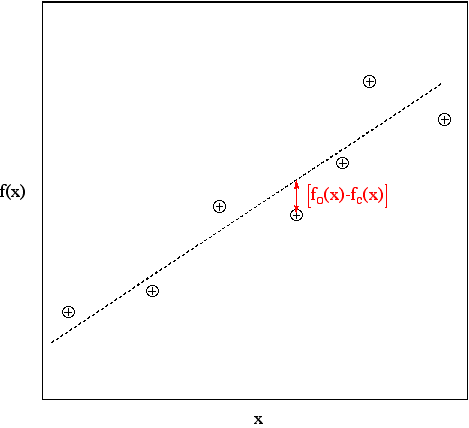
Assuming, for the time being, that the relationship between
the adjustable parameters (x, y, z plus temperature factors) and the calculated quantity (Fhkl)
is linear, the method of least squares could be utilized to calculate the best values of the parameters.
The relationship is certainly not linear (the adjustable parameters appear in exponential
terms!), but it is useful to see how least squares might be applicable and then make an approximation
that causes the relationship in the Fhkl expression to be treatable as linear.
To recap the method of least squares, below is a graph of experimental points and the "best" straight
line drawn through the points:


